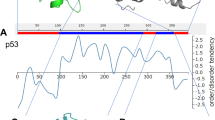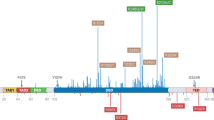Abstract
The oncoprotein SET is frequently overexpressed in many types of tumors and contributes to malignant initiation and progression through multiple mechanisms, including the hijacking of the tumor suppressors p53 and PP2A. Targeting aberrant SET represents a promising strategy for cancer intervention. However, the mechanism by which endogenous SET is regulated in cancer cells remains largely unknown. Here, we identified the tumor suppressor p53 as a key regulator that transcriptionally repressed the expression of SET in both normal and cancer cells. In addition, p53 stimulated PP2A phosphatase activity via p53-mediated transcriptional repression of SET, whereby SET-mediated inhibition of PP2A was alleviated. Moreover, targeting the interaction between SET and PP2A catalytic subunit (PP2Ac) with FTY720 enhanced stress-induced p53 activation via PP2A-mediated dephosphorylation of p53 on threonine 55 (Thr55). Therefore, our findings uncovered a previously unknown p53-SET-PP2A regulatory feedback loop. To functionally potentiate this feedback loop, we designed a combined therapeutic strategy by simultaneously administrating a p53 activator and SET antagonist in cancer cells and observed a dramatic synergistic effect on tumor suppression. Our study reveals mechanistic insight into the regulation of the oncoprotein SET and raises a potential strategy for cancer therapy by stimulating the p53-SET-PP2A feedback loop.
Similar content being viewed by others
References
Akdemir, K.C., Jain, A.K., Allton, K., Aronow, B., Xu, X., Cooney, A.J., Li, W., and Barton, M.C. (2014). Genome-wide profiling reveals stimulus-specific functions of p53 during differentiation and DNA damage of human embryonic stem cells. Nucleic Acids Res 42, 205–223.
Bayarkhangai, B., Noureldin, S., Yu, L., Zhao, N., Gu, Y., Xu, H., and Guo, C. (2018). A comprehensive and perspective view of oncoprotein SET in cancer. Cancer Med 7, 3084–3094.
Bieging, K.T., Mello, S.S., and Attardi, L.D. (2014). Unravelling mechanisms of p53-mediated tumour suppression. Nat Rev Cancer 14, 359–370.
Bykov, V.J.N., Eriksson, S.E., Bianchi, J., and Wiman, K.G. (2018). Targeting mutant p53 for efficient cancer therapy. Nat Rev Cancer 18, 89–102.
Cristóbal, I., Garcia-Orti, L., Cirauqui, C., Cortes-Lavaud, X., García-Sánchez, M.A., Calasanz, M.J., and Odero, M.D. (2012). Overexpression of SET is a recurrent event associated with poor outcome and contributes to protein phosphatase 2A inhibition in acute myeloid leukemia. Haematologica 97, 543–550.
Dacol, E.C., Wang, S., Chen, Y., and Lepique, A.P. (2021). The interaction of SET and protein phosphatase 2A as target for cancer therapy. Biochim Biophys Acta (BBA)-Rev Cancer 1876, 188578.
Fan, Z., Beresford, P.J., Oh, D.Y., Zhang, D., and Lieberman, J. (2003). Tumor suppressor NM23-H1 is a Granzyme A-activated DNase during CTL-mediated apoptosis, and the nucleosome assembly protein SET is its inhibitor. Cell 112, 659–672.
Fowle, H., Zhao, Z., and Grana, X. (2019). PP2A holoenzymes, substrate specificity driving cellular functions and deregulation in cancer. Adv Cancer Res 144, 55–93.
Ge, Y., Wu, S., Zhang, Z., Li, X., Li, F., Yan, S., Liu, H., Huang, J., and Zhao, Y. (2019). Inhibition of p53 and/or AKT as a new therapeutic approach specifically targeting alt cancers. Protein Cell 10, 808–824.
Hafner, A., Bulyk, M.L., Jambhekar, A., and Lahav, G. (2019). The multiple mechanisms that regulate p53 activity and cell fate. Nat Rev Mol Cell Biol 20, 199–210.
Hung, M.H., Chen, Y.L., Chu, P.Y., Shih, C.T., Yu, H.C., Tai, W.T., Shiau, C.W., and Chen, K.F. (2016). Upregulation of the oncoprotein SET determines poor clinical outcomes in hepatocellular carcinoma and shows therapeutic potential. Oncogene 35, 4891–4902.
Janghorban, M., Farrell, A.S., Allen-Petersen, B.L., Pelz, C., Daniel, C.J., Oddo, J., Langer, E.M., Christensen, D.J., and Sears, R.C. (2014). Targeting c-MYC by antagonizing PP2A inhibitors in breast cancer. Proc Natl Acad Sci USA 111, 9157–9162.
Kastenhuber, E.R., and Lowe, S.W. (2017). Putting p53 in context. Cell 170, 1062–1078.
Kim, J.Y., Lee, K.S., Seol, J.E., Yu, K., Chakravarti, D., and Seo, S.B. (2012). Inhibition of p53 acetylation by INHAT subunit SET/TAF-Iβ represses p53 activity. Nucleic Acids Res 40, 75–87.
Kon, N., Wang, D., and Gu, W. (2019). Loss of SET reveals both the p53-dependent and the p53-independent functions in vivo. Cell Death Dis 10, 237.
Li, H.H., Cai, X., Shouse, G.P., Piluso, L.G., and Liu, X. (2007). A specific PP2A regulatory subunit, B56γ, mediates DNA damage-induced dephosphorylation of p53 at Thr55. EMBO J 26, 402–411.
Li, M., Makkinje, A., and Damuni, Z. (1996). The myeloid leukemia-associated protein SET is a potent inhibitor of protein phosphatase 2A. J Biol Chem 271, 11059–11062.
Liu, H., Gu, Y., Wang, H., Yin, J., Zheng, G., Zhang, Z., Lu, M., Wang, C., and He, Z. (2015). Overexpression of PP2A inhibitor SET oncoprotein is associated with tumor progression and poor prognosis in human non-small cell lung cancer. Oncotarget 6, 14913–14925.
Liu, X., Zhang, L., Thu, P.M., Min, W., Yang, P., Li, J., Li, P., and Xu, X. (2021). Sodium cantharidinate, a novel anti-pancreatic cancer agent that activates functional p53. Sci China Life Sci 64, 1295–1310.
Mazhar, S., Taylor, S.E., Sangodkar, J., and Narla, G. (2019). Targeting PP2A in cancer: combination therapies. Biochim Biophys Acta (BBA)-Mol Cell Res 1866, 51–63.
Mumby, M. (2007). PP2A: Unveiling a reluctant tumor suppressor. Cell 130, 21–24.
Muto, S., Senda, M., Akai, Y., Sato, L., Suzuki, T., Nagai, R., Senda, T., and Horikoshi, M. (2007). Relationship between the structure of SET/TAF-Iβ/INHAT and its histone chaperone activity. Proc Natl Acad Sci USA 104, 428 5–4290.
Nagata, K., Saito, S., Okuwaki, M., Kawase, H., Furuya, A., Kusano, A., Hanai, N., Okuda, A., and Kikuchi, A. (1998). Cellular localization and expression of template-activating factor I in different cell types. Exp Cell Res 240, 274–281.
Pelletier, D., and Hafler, D.A. (2012). Fingolimod for multiple sclerosis. N Engl J Med 366, 339–347.
Saddoughi, S.A., Gencer, S., Peterson, Y.K., Ward, K.E., Mukhopadhyay, A., Oaks, J., Bielawski, J., Szulc, Z.M., Thomas, R.J., Selvam, S.P., et al. (2013). Sphingosine analogue drug FTY720 targets I2PP2A/SET and mediates lung tumour suppression via activation of PP2A-RIPK1-dependent necroptosis. EMBO Mol Med 5, 105–121.
Saito, S., Miyaji-Yamaguchi, M., Shimoyama, T., and Nagata, K. (1999). Functional domains of template-activating factor-I as a protein phosphatase 2A inhibitor. Biochem Biophysl Res Commun 259, 471–475.
Shouse, G.P., Nobumori, Y., Panowicz, M.J., and Liu, X. (2011). ATM-mediated phosphorylation activates the tumor-suppressive function of B56γ-PP2A. Oncogene 30, 3755–3765.
Sobral, L.M., Sousa, L.O., Coletta, R.D., Cabral, H., Greene, L.J., Tajara, E.H., Gutkind, J.S., Curti, C., and Leopoldino, A.M. (2014). Stable SET knockdown in head and neck squamous cell carcinoma promotes cell invasion and the mesenchymal-like phenotype in vitro, as well as necrosis, cisplatin sensitivity and lymph node metastasis in xenograft tumor models. Mol Cancer 13, 32.
Switzer, C.H., Cheng, R.Y.S., Vitek, T.M., Christensen, D.J., Wink, D.A., and Vitek, M.P. (2011). Targeting SET/I2PP2A oncoprotein functions as a multi-pathway strategy for cancer therapy. Oncogene 30, 2504–2513.
ten Klooster, J.P., Leeuwen, I., Scheres, N., Anthony, E.C., and Hordijk, P. L. (2007). Rac1-induced cell migration requires membrane recruitment of the nuclear oncogene set. EMBO J 26, 336–345.
Wang, D., Kon, N., Lasso, G., Jiang, L., Leng, W., Zhu, W.G., Qin, J., Honig, B., and Gu, W. (2016). Acetylation-regulated interaction between p53 and SET reveals a widespread regulatory mode. Nature 538, 118–122.
Wang, D., Kon, N., Tavana, O., and Gu, W. (2017). The “readers” of unacetylated p53 represent a new class of acidic domain proteins. Nucleus 8, 360–369.
Yu, G., Yan, T., Feng, Y., Liu, X., Xia, Y., Luo, H., Wang, J.Z., and Wang, X. (2013). Ser9 phosphorylation causes cytoplasmic detention of I2PP2A/SET in alzheimer disease. NeuroBiol Aging 34, 1748–1758.
Yuan, X., Zhang, T., Zheng, X., Zhang, Y., Feng, T., Liu, P., Sun, Z., Qin, S., Liu, X., Zhang, L., et al. (2017). Overexpression of set oncoprotein is associated with tumor progression and poor prognosis in human gastric cancer. Oncol Rep 38, 1733–1741.
Acknowledgements
This work was supported by Beijing Municipal Natural Science Foundation (7192126), the National Natural Science Foundation of China (81872311, 82073132, 82122054, and 81720108027), the National Key R&D Program of China (2019YFC1005200, and 2019YFC1005201), and CAMS Innovation Fund for Medical Sciences (2021-I2M-1-016).
Author information
Authors and Affiliations
Corresponding authors
Additional information
Compliance and ethics
The author(s) declare that they have no conflict of interest.
Electronic supplementary material
Rights and permissions
About this article
Cite this article
Yao, H., Xu, W., Liu, Y. et al. The repression of oncoprotein SET by the tumor suppressor p53 reveals a p53-SET-PP2A feedback loop for cancer therapy. Sci. China Life Sci. 66, 81–93 (2023). https://doi.org/10.1007/s11427-021-2123-8
Received:
Accepted:
Published:
Issue Date:
DOI: https://doi.org/10.1007/s11427-021-2123-8




